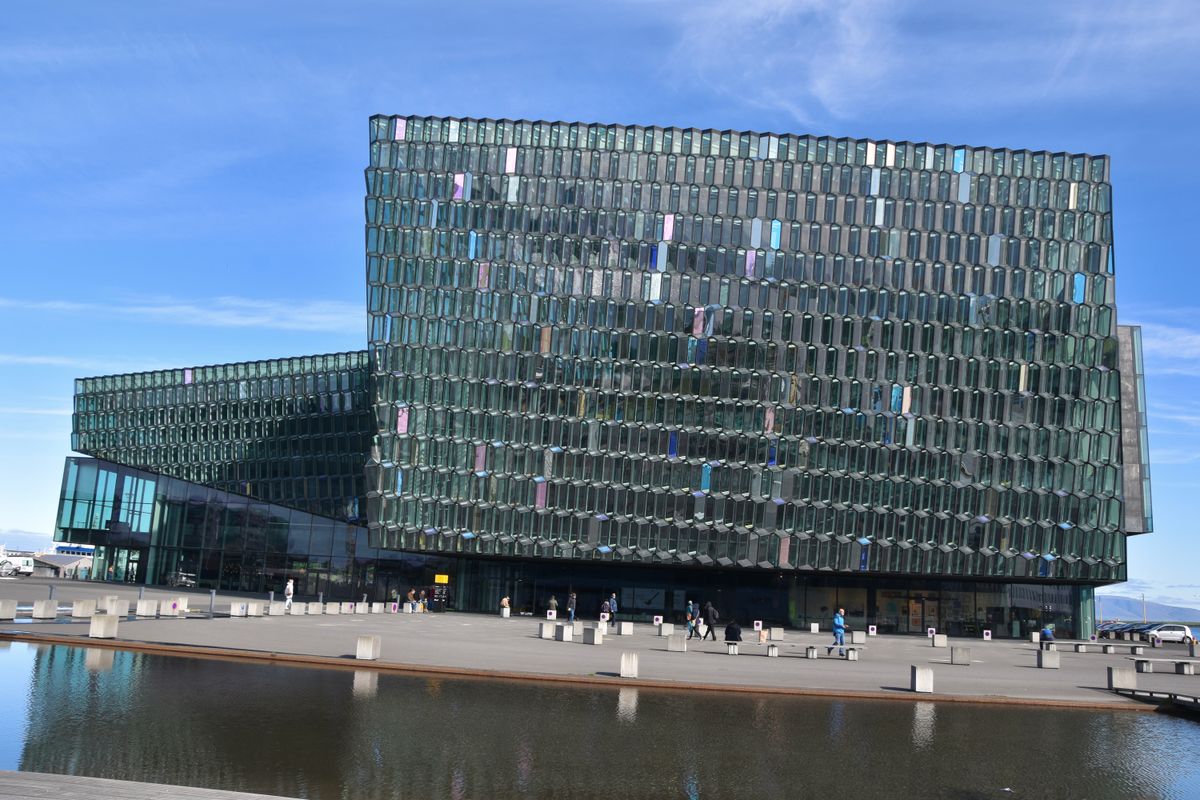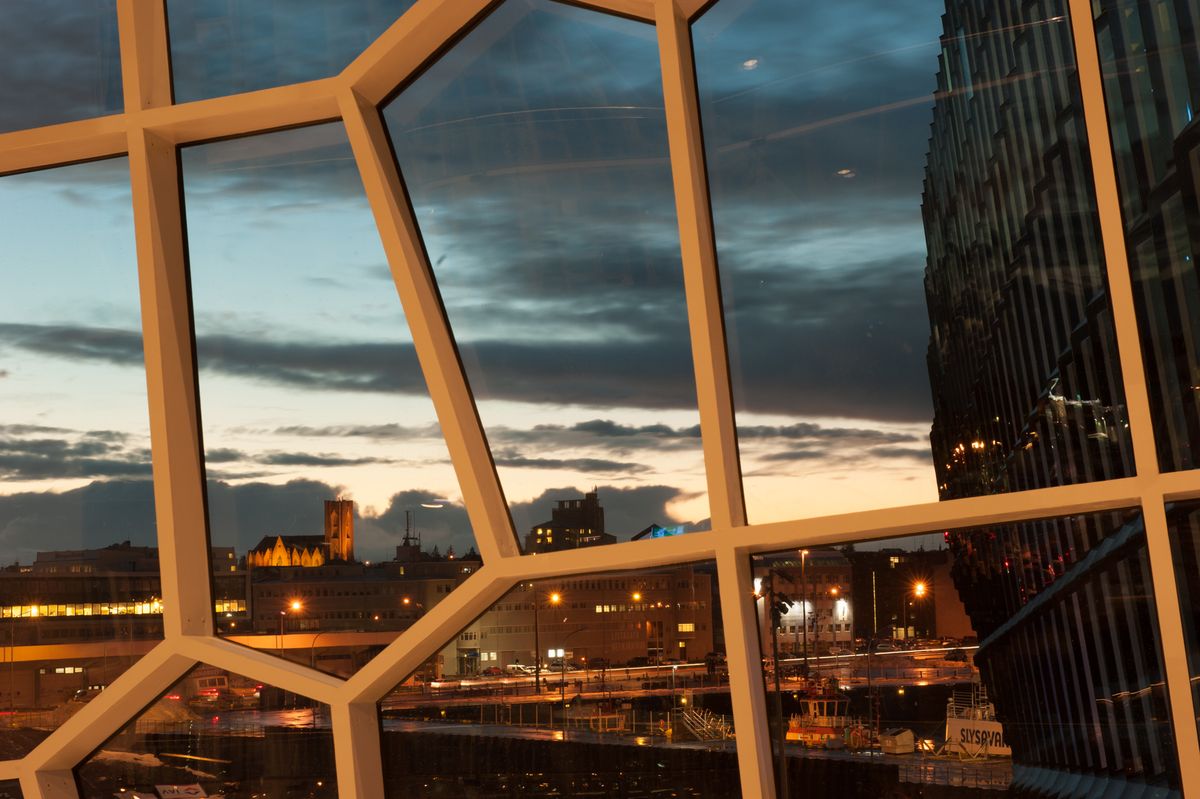About
It's to be expected that a lot of controversy would go into opening a 164-million Euro concert venue and conference hall in the midst of a horrific economic recession. But now that the hubbub surrounding the conditions in which Harpa was created have quieted down, it's undeniable that Reykjavík's temple uniting humans and sound is uniquely stunning.
Dreams of a noteworthy music house in Iceland's capital city date back to 1881, but the timing to finally make those dreams a reality couldn't have been worse. When the planning stages for Harpa began back in the mid-2000s, Danish architectural firm Henning-Larsen and Danish-Icelandic artist Olafur Eliasson included plans for not only a concert venue, but also luxury apartments on-site, a hotel with 400 rooms, plus retail space and a site-exclusive parking lot. However, as ground was being broken on the project, Iceland's economy experienced a full-on collapse — and unlike most everywhere else in the world, banks and corporations weren't given a bailout by the Icelandic government, which left the island nation in a unique fiscal position.
While Iceland's economy sorted itself out, Harpa was left to languish in a half-built purgatory. Such was the case until 2009, when the government rescued the project, amidst an uproar from its citizens. By the time the concert hall was completed, Harpa became, in the words of its artist creator, "a conference centre with some music on the side” rather than the other way around, as first envisioned.
Though that may seem like a crippling compromise, it's worth considering the sheer amount of praise the structure receives, particularly as it fundamentally transformed the skyline of a city like Reykjavík. Design buffs immediately fawned over Harpa for its rare ability to look better in real life than in architectural sketches. Sound nerds continue to adore it for the attention paid to the theater's acoustics (read: it's as functional as it is formally pleasing). And then there are the economists, who are blown away by the fact of its sheer existence.
Perched on the edge of Reykjavík's bustling harbor, where massive ships can be seen entering or leaving port at all hours from inside the building's honeycombed glass walls, Harpa is worth exploring even if there's nary a concert or conference to be had. There's no bad time to get lost within its sleek, hive-like innards, or watch these ships from unknown origins come and go from the shelter of a glistening windbreak that has proven truly remarkable on every level.
Related Tags
Iceland in Winter: Northern Lights & Geothermal Marvels
A land of folklore and myths on a backdrop of remarkable natural wonders.
Book NowCommunity Contributors
Added By
Edited By
loquito57, Rain Salazar, Jaszmina Szendrey, thegenxjourney...
Published
March 2, 2016



















































































































